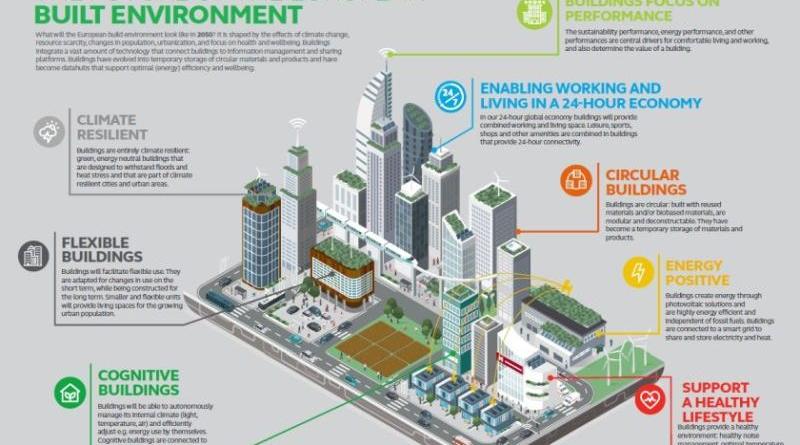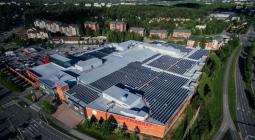Building circular and climate-neutral buildings for Europe.

The circular economy will be an essential building block of a climate-neutral Europe. A circular economy means making the most of our resources, doing more with less while reducing waste and energy use. This is a huge challenge for the construction sector, which uses about half of the resources extracted around the world. Europe can’t build a circular economy without focusing on the built environment.
This means that the EU must develop the right tools, including guidelines and the necessary regulatory framework to accompany the Union towards a zero-carbon and circular built environment. It is important to remind ourselves that as one of Europe’s largest economic sectors (almost 10% GDP) the construction is a very divers industry that includes a huge number of small and medium sized enterprises (SMEs). These SMEs will be instrumental in achieving the EU’s circular economy and carbon neutrality objectives. They need clear support to participate and strive in the sustainable built environment. For this, the EU needs to confirm its commitment to provide direction and a predictable business environment against the 2050 horizon. Only this will ensure that the construction sector can fully engage in the transition.
Commitment to the Energy Efficiency First principle and the energy efficiency of buildings regulatory framework established over recent decades have already shown that Europe can be a leader. The EU has set itself an ambitious objective of achieving highly energy efficient and decarbonised building stock by 2050. This has already mobilised investors and policy makers to start delivering a new generation of nearly zero energy buildings. Because some 97 percent of existing European buildings will need to be renovated, the 2050 target also spurs investment in the buildings we live and work in every day.
This commitment needs to be combined with a social transition for buildings. Most Europeans spend up to 90 percent of their time in buildings – in offices, schools, hospitals and shops, and of course at home. Better housing will provide a better future! But citizens want to hear about the benefits of buildings renovation, as well as about support for creating a modern built environment. Renovation is designed to improve energy efficiency, and so to reduce greenhouse-gas emissions and the dangers of climate change. But the societal benefits of investing in building renovation go well beyond energy savings. Our health and well-being will equally benefit from better buildings By putting the principles of sustainability and circularity at the centre of the building sector’s transformation, the EU can deliver maximum value for society.
This is why the European Insulation Manufacturers Association (Eurima) asked leading design & consultancy firm Arcadis to make a forward-looking description of the European built environment in 2030 and 2050. The Arcadis report shows that by 2050, buildings must be resource efficient, climate resilient, circular, and deconstructable. Buildings of the future must deliver energy, be responsive and flexible in use. The buildings we live and work in must support healthy lifestyles and enable working in a 24-hour economy.
The EU has already begun to develop a system that could realise the vision for a circular and climate-neutral built environment. The system is called Level(s). Level(s) is a way of assessing the energy performance of buildings, as well as other elements such as resource use, comfort, and resilience to climate change.
The European Commission is currently testing Level(s) as a voluntary reporting framework for buildings. Based on feedback from this trial, the Commission will work to improve the system, with a final updated version expected at the end of this year.
For Level(s) to deliver the benefits of a circular economy it should become more than voluntary guidelines. We need legislation to assess the full sustainability performance of buildings. This can then be the foundation for future EU building policies, bringing together climate, sustainability, and circularity.
There are two ways in which the next European Commission and the newly installed members of the European Parliament can use Level(s) to help deliver a sustainable built environment:
Firstly, Level(s) should become part of Green Public Procurement guidelines for buildings. Public procurement can encourage the construction industry and investors to adopt circular and zero-carbon principles. Over time, a broad set of indicators will be needed, including resource and health indicators, as well as social cohesion, climate change resilience, and safety. Level(s) can provide the assessment framework for these different issues and help steer financial resources to sustainable buildings.
Secondly, legislation on the Energy Performance of Buildings could become legislation on the Sustainability Performance of Buildings. This would give the EU a legal framework for the transition to a sustainable built environment, with Level(s) at its heart. Accompanied by the shorter term use and improvement of EU waste policy rules, this legislation would boost the recycling or reuse of building materials from renovation and deconstruction projects.
Eurima looks forward to working with all newly elected policymakers to build a sustainable futurefor European building stock.
8 July 2019




